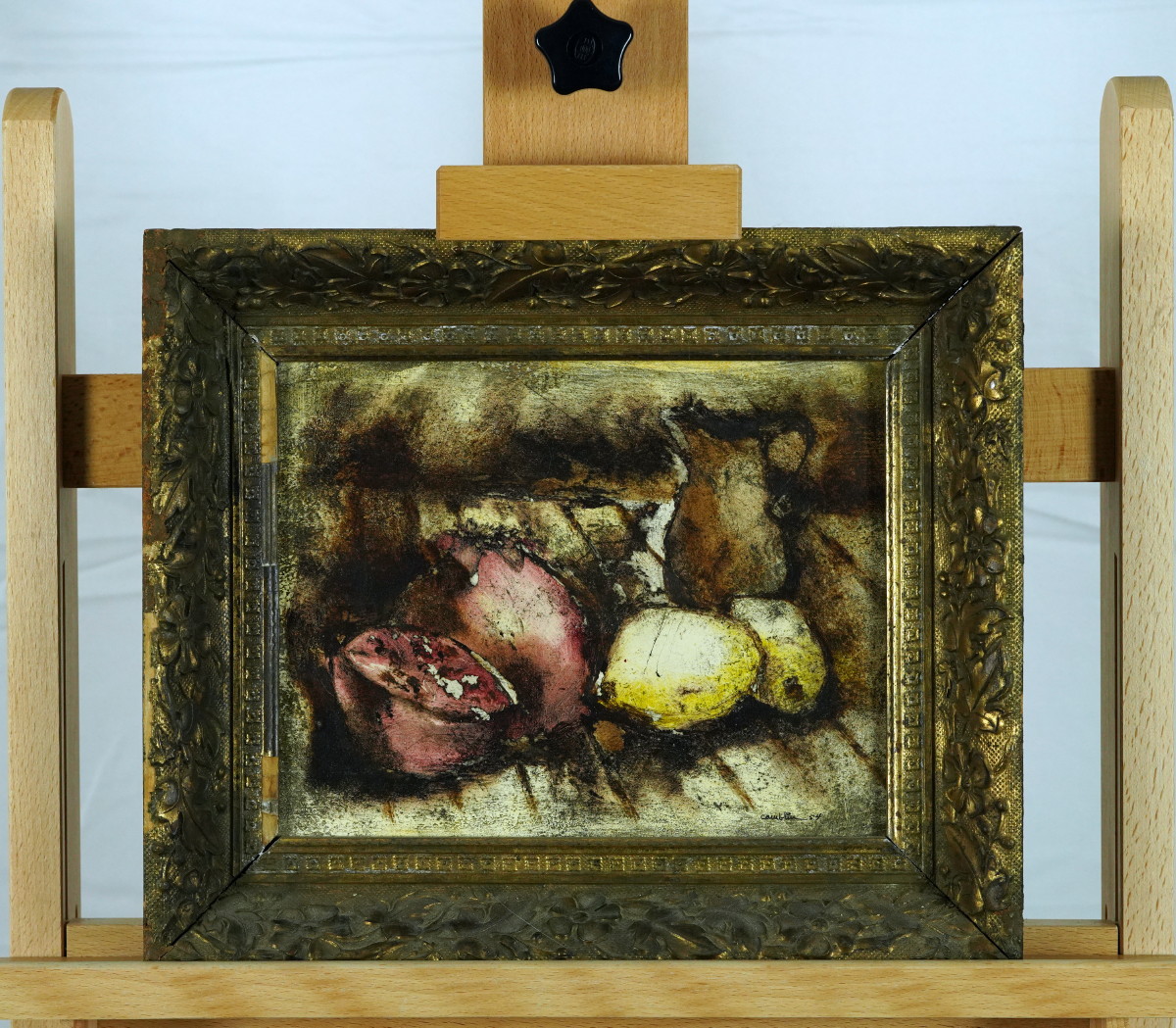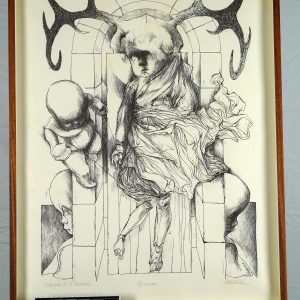Description
lemons pitcher, 1954
Acrylic on masonite
Signed
7.5 x 9.5 in. (image)
35.73 x 19.75 in. (frame)
original, includes certificate of authenticity from ArtTrust
The image “lemons pitcher” portrays a still-life composition featuring fruit, likely pomegranates or apples, and a ceramic pitcher. The fruits are depicted with vibrant hues, with the exposed pulp showing shades of red, while the outer skin exhibits deep browns and yellows. The background is dark and textured, evoking a sense of age and weight, which contrasts with the soft rendering of the objects. The play of light and shadow gives the scene a dramatic, almost tenebristic feel.
From a Zen perspective, the artwork invites a mindful observation of the ordinary, bringing attention to everyday objects and their quiet beauty. The simplicity of fruit and pitcher reflects themes of impermanence and interconnectedness. Just as fruit matures, decays, and eventually returns to the earth, so too does everything in life follow this natural cycle. The deep shadows may symbolize the stillness and emptiness of meditation, while the illuminated objects draw the viewer’s focus to the present moment.
Using I Ching concepts, this painting might connect with Hexagram 23 (“Splitting Apart”), which deals with decay and transformation. The condition of the fruit, appearing aged or bruised, signifies a natural process of disintegration, mirroring the cycles in life where old structures must give way for the new to emerge. The contrast between the light and dark elements can be seen as representing the duality found in Yin and Yang, suggesting that even in decay, there is beauty and potential for renewal.
Combining the above perspectives, the artwork presents an exploration of life’s cyclical nature, with emphasis on transformation. The decaying fruit can be appreciated not merely for its appearance, but for the story it tells about time, growth, and eventual dissolution. The Zen element brings the viewer into a state of contemplation, urging them to see the beauty in the mundane. The I Ching’s philosophy underpins this message, suggesting that decline is a necessary phase before a new beginning.
The style echoes aspects of classical still-life traditions, particularly reminiscent of the Baroque period’s use of chiaroscuro and the vanitas theme, which reflects on the transient nature of life. The textured surface and the rough quality of the rendering introduce a modern touch, perhaps aligning with Expressionist techniques, where the focus is on conveying emotion rather than perfect representation. The overall composition serves as a bridge between past and contemporary approaches to still life.
*Shipping cost will vary, please inquire at sales@camblingallery.com before purchasing.
Currently ships from Oregon, USA
Member of artnet? Apply for a discount! Inquire about intergallery and permanent loans for museums.
Reproductions of this drawing are available in multiple sizes!
Click here to use our high-resolution viewer!
This artwork is available with a non-fungible token to ensure traceability and transparency of provenance.
The royalty factor – Unlike traditional artworks, such as paintings, mosaics, statues, and the like, NFTs can be programmed to provide royalties to you every time the painting (and token) is sold and resold – for eternity. That mind-bending Camblin you sold could be worth millions one day and provide income for your great-great-great grandkids!
Anti-forgery – The central idea underpinning NFTs is that they are built on the blockchain, which is meant to offer advanced security. Think of it like an un-erasable and un-avoidable copyright.
Easy authentication – Another compelling aspect of NFT art and NFTs in general is the ability to quickly and easily authenticate items, as the record of ownership is scrupulously kept on the blockchain.




